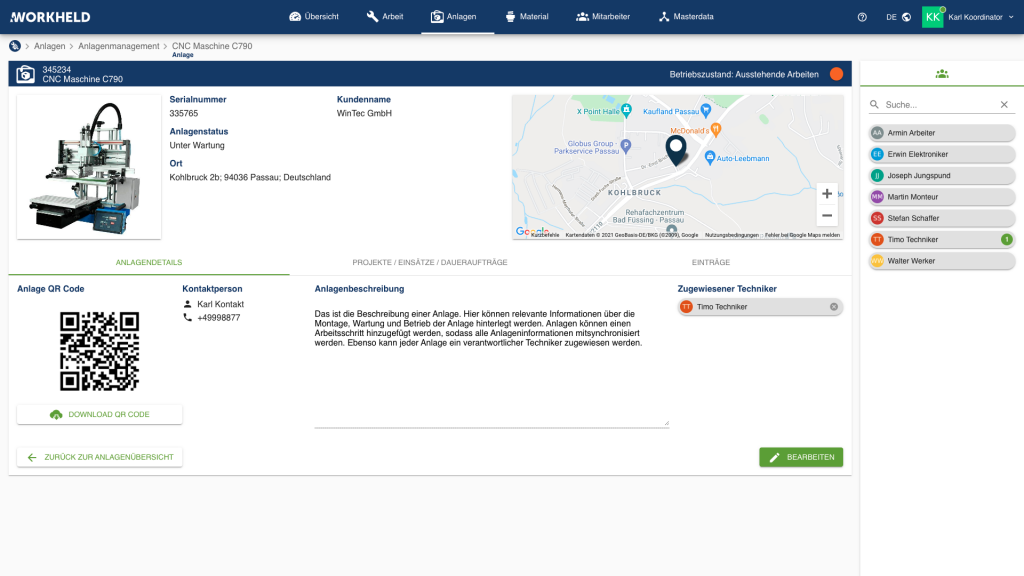Using Workheld’s asset management, coordinators can assign the affected assets directly to work orders and individual work steps in Workheld, and technicians receive detailed information. Maintenance and service work on the system is documented and included in the system history.
Asset as the linchpin
Using the asset management in Workheld, new assets can be created and attached to the work order or individual work steps by drag & drop. This provides technicians with detailed information on the status of the asset, its exact location, the specifics of the asset and the contact person.

Status management calculates an operating status based on outstanding maintenance and service orders, so that it is clear whether work is currently planned or in progress on the system. It is also possible to assign an individual asset status to each asset and to assign a responsible technician.
Asset history
The documentation of the technicians is linked to the respective asset via the asset management system and thus it can be traced exactly when, where and how work was carried out on a asset. Via the asset history, it is possible to see which parts have been replaced, which values were recorded during the last inspection or whether defects have occurred recently.
The asset history also makes it possible to evaluate how much work time has to be invested in the maintenance of a certain type of equipment or how often repairs had to be carried out.
Basis of the Industry 4.0
Hardly any other feature of the Workheld platform is so closely linked to the major topics of Industry 4.0! Predictive Maintenance, Digital Twins or even Industrial IoT are buzzwords of digitalization, which become meaningless without digital asset management. Workheld can therefore also be linked to existing IoT platforms to trigger predefined work processes based on sensor data by digitizing existing work instructions and linking them to specific events, such as the exceeding of a limit value or the occurrence of a specific error code. Experience has shown that a large proportion of possible damage events can be meaningfully mapped in this way.